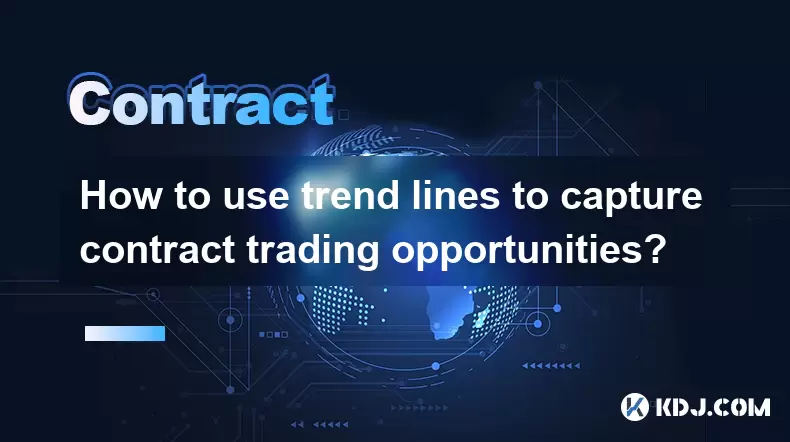-
 Bitcoin
Bitcoin $105,713.8056
3.44% -
 Ethereum
Ethereum $2,448.3377
7.44% -
 Tether USDt
Tether USDt $1.0005
-0.01% -
 XRP
XRP $2.1892
8.88% -
 BNB
BNB $642.1253
2.79% -
 Solana
Solana $144.4049
6.28% -
 USDC
USDC $1.0000
-0.02% -
 TRON
TRON $0.2738
1.20% -
 Dogecoin
Dogecoin $0.1642
6.61% -
 Cardano
Cardano $0.5861
7.46% -
 Hyperliquid
Hyperliquid $38.0472
6.61% -
 Sui
Sui $2.7809
11.17% -
 Chainlink
Chainlink $13.5044
14.64% -
 Bitcoin Cash
Bitcoin Cash $450.9966
0.93% -
 UNUS SED LEO
UNUS SED LEO $9.1282
0.68% -
 Stellar
Stellar $0.2478
7.70% -
 Avalanche
Avalanche $18.1694
8.09% -
 Toncoin
Toncoin $2.9073
3.99% -
 Shiba Inu
Shiba Inu $0.0...01166
6.14% -
 Hedera
Hedera $0.1525
10.64% -
 Litecoin
Litecoin $84.4484
3.86% -
 Monero
Monero $319.2184
7.30% -
 Ethena USDe
Ethena USDe $1.0006
0.02% -
 Polkadot
Polkadot $3.4709
8.34% -
 Dai
Dai $0.9999
-0.02% -
 Bitget Token
Bitget Token $4.2814
6.14% -
 Uniswap
Uniswap $7.0518
12.26% -
 Pepe
Pepe $0.0...01001
10.11% -
 Pi
Pi $0.5427
7.23% -
 Aave
Aave $265.8182
14.99%
How to use trend lines to capture contract trading opportunities?
Trend lines help crypto traders spot support/resistance levels, improve trade timing, and manage risk when combined with candlestick patterns and volume analysis.
Jun 24, 2025 at 03:14 pm

Understanding Trend Lines in Cryptocurrency Trading
Trend lines are fundamental tools used by traders to identify potential support and resistance levels within the market. In cryptocurrency contract trading, where volatility is high and opportunities can arise quickly, mastering trend line usage becomes essential. A trend line is a straight line that connects two or more price points and extends into the future to act as a line of support or resistance.
Correctly drawn trend lines help traders visualize the direction of an asset's price movement and anticipate reversals or continuations. These lines are especially useful in spotting breakout opportunities, which are common in crypto derivatives due to leverage amplification effects.
Drawing Accurate Trend Lines for Crypto Contracts
To effectively use trend lines, accuracy in drawing them is crucial. The process begins with identifying at least two significant swing highs or lows on a chart. For an uptrend line, you connect rising lows; for a downtrend line, you connect falling highs.
- Ensure that the line touches at least two key price points.
- Extend the line forward to observe how price reacts near it.
- Avoid forcing the line to fit the data—only use naturally forming pivot points.
The most effective trend lines are those that have been tested multiple times without being broken. This increases their reliability as dynamic support or resistance zones. In contract trading, these zones often become focal points for entry or exit decisions, particularly when combined with volume analysis.
Combining Trend Lines with Candlestick Patterns
Incorporating candlestick patterns with trend lines significantly improves trade accuracy. When a strong trend line coincides with a reversal pattern like a pin bar, engulfing candle, or inside bar, it signals a higher probability setup.
For example:
- A bullish engulfing pattern forming near a well-established uptrend line may indicate a long opportunity.
- A bearish pin bar touching a downtrend line could suggest a shorting opportunity.
Contract traders often look for confluence between technical indicators and trend lines. Adding moving averages or RSI can confirm whether the trend line’s bounce or break is supported by momentum.
Executing Trades Based on Trend Line Breaks
Breakouts from trend lines can offer lucrative opportunities in contract trading, but they must be confirmed to avoid false signals. Traders should wait for a clear close beyond the trend line rather than acting on a simple wick penetration.
When a trend line breaks:
- Watch for increased volume accompanying the move, which confirms institutional participation.
- Consider entering after a retest of the broken trend line as new support or resistance.
- Place stop-loss orders just beyond the trend line to manage risk effectively.
It is also important to note that once a trend line is broken, its role often flips—support becomes resistance, and vice versa. This dynamic nature makes them powerful tools for both entry and exit planning.
Managing Risk Around Trend Line-Based Entries
Risk management is critical when using trend lines for contract trading. Due to the leveraged nature of futures contracts, even small adverse moves can lead to liquidation if positions are not properly managed.
Key steps include:
- Setting tight stop-loss orders based on recent price swings.
- Adjusting position size according to the distance from the entry point to the stop-loss.
- Using trailing stops to lock in profits as the trend progresses.
Traders should never risk more than 1-2% of their account on any single trade. Especially in fast-moving crypto markets, maintaining discipline around trend line entries ensures longevity in trading.
Frequently Asked Questions (FAQ)
Q: How many touchpoints are needed to draw a valid trend line?
A: While a minimum of two touchpoints can form a trend line, a third touch significantly strengthens its validity. More touches increase confidence in its reliability as a support or resistance level.
Q: Can trend lines be applied across different timeframes?
A: Yes, trend lines are applicable across all timeframes—from one-minute charts to weekly charts. However, trend lines on higher timeframes (like 4-hour or daily) tend to carry more weight and are more reliable for contract trading decisions.
Q: Should I redraw trend lines frequently as the price evolves?
A: Redrawing trend lines too often can lead to curve-fitting and poor decision-making. Once drawn, allow the trend line to play out unless there is a clear structural shift in price action that warrants a new line.
Q: Are trend lines sufficient on their own for making trading decisions in crypto futures?
A: While trend lines are powerful, they work best when combined with other tools such as candlestick patterns, volume analysis, or oscillators like RSI or MACD. Using multiple confirmations enhances the probability of successful trades.
Disclaimer:info@kdj.com
The information provided is not trading advice. kdj.com does not assume any responsibility for any investments made based on the information provided in this article. Cryptocurrencies are highly volatile and it is highly recommended that you invest with caution after thorough research!
If you believe that the content used on this website infringes your copyright, please contact us immediately (info@kdj.com) and we will delete it promptly.
- BlockDAG's Bold Move: A $100 Million Token Airdrop Fuels Ecosystem Growth
- 2025-06-25 00:45:12
- Aero Crypto (AERO): 100x Altcoin or Just Jumped 14%? Decoding the Hype
- 2025-06-25 00:25:12
- Banish Flies with a Coin Trick? The Buzz Around This Bizarre Hack
- 2025-06-25 00:45:12
- Bitcoin, Mortgages, and Finance: A New Era?
- 2025-06-25 00:25:12
- Mastercard, Fiserv, and Stablecoins: A New Era of Payments?
- 2025-06-25 00:55:12
- Circle Stock, Stablecoin Competition, and Wall Street: A New York Minute
- 2025-06-25 00:55:12
Related knowledge

How to use the price slope to filter the false breakthrough signal of the contract?
Jun 20,2025 at 06:56pm
Understanding the Concept of Price Slope in Contract TradingIn contract trading, especially within cryptocurrency derivatives markets, price slope refers to the rate at which the price changes over a specific time period. It helps traders assess the strength and sustainability of a trend. A steep slope may indicate strong momentum, while a shallow slope...

How to determine the expected volatility of the contract through the volatility cone?
Jun 19,2025 at 12:28pm
Understanding the Basics of Volatility in Cryptocurrency ContractsIn the realm of cryptocurrency trading, volatility is a key metric that traders use to assess potential risk and reward. When dealing with futures contracts, understanding how volatile an asset might become over time is crucial for position sizing, risk management, and strategy developmen...

How to formulate a contract intraday trading plan in combination with the pivot point system?
Jun 21,2025 at 03:42pm
Understanding the Basics of Pivot Points in Cryptocurrency TradingPivot points are technical analysis tools used by traders to identify potential support and resistance levels. These levels are calculated using the previous day's high, low, and closing prices. In the context of cryptocurrency trading, where markets operate 24/7, pivot points help trader...

How to adjust the contract position ratio through the price fluctuation entropy?
Jun 22,2025 at 11:42am
Understanding Price Fluctuation Entropy in Cryptocurrency ContractsIn the world of cryptocurrency futures trading, price fluctuation entropy is a relatively new concept used to measure market volatility and uncertainty. It derives from information theory, where entropy refers to the degree of randomness or unpredictability in a system. In crypto contrac...

How to use the volume swing indicator to predict the contract volume-price divergence?
Jun 18,2025 at 11:42pm
Understanding the Volume Swing IndicatorThe volume swing indicator is a technical analysis tool used primarily in cryptocurrency trading to evaluate changes in volume over time. Unlike price-based indicators, this metric focuses solely on trading volume, which can provide early signals about potential market reversals or continuations. The key idea behi...

How to use the Gaussian channel to set the contract trend tracking stop loss?
Jun 18,2025 at 09:21pm
Understanding the Gaussian Channel in Cryptocurrency TradingThe Gaussian channel is a technical indicator used primarily in financial markets, including cryptocurrency trading, to identify trends and potential reversal points. It is based on statistical principles derived from the normal distribution, commonly known as the Gaussian distribution or bell ...

How to use the price slope to filter the false breakthrough signal of the contract?
Jun 20,2025 at 06:56pm
Understanding the Concept of Price Slope in Contract TradingIn contract trading, especially within cryptocurrency derivatives markets, price slope refers to the rate at which the price changes over a specific time period. It helps traders assess the strength and sustainability of a trend. A steep slope may indicate strong momentum, while a shallow slope...

How to determine the expected volatility of the contract through the volatility cone?
Jun 19,2025 at 12:28pm
Understanding the Basics of Volatility in Cryptocurrency ContractsIn the realm of cryptocurrency trading, volatility is a key metric that traders use to assess potential risk and reward. When dealing with futures contracts, understanding how volatile an asset might become over time is crucial for position sizing, risk management, and strategy developmen...

How to formulate a contract intraday trading plan in combination with the pivot point system?
Jun 21,2025 at 03:42pm
Understanding the Basics of Pivot Points in Cryptocurrency TradingPivot points are technical analysis tools used by traders to identify potential support and resistance levels. These levels are calculated using the previous day's high, low, and closing prices. In the context of cryptocurrency trading, where markets operate 24/7, pivot points help trader...

How to adjust the contract position ratio through the price fluctuation entropy?
Jun 22,2025 at 11:42am
Understanding Price Fluctuation Entropy in Cryptocurrency ContractsIn the world of cryptocurrency futures trading, price fluctuation entropy is a relatively new concept used to measure market volatility and uncertainty. It derives from information theory, where entropy refers to the degree of randomness or unpredictability in a system. In crypto contrac...

How to use the volume swing indicator to predict the contract volume-price divergence?
Jun 18,2025 at 11:42pm
Understanding the Volume Swing IndicatorThe volume swing indicator is a technical analysis tool used primarily in cryptocurrency trading to evaluate changes in volume over time. Unlike price-based indicators, this metric focuses solely on trading volume, which can provide early signals about potential market reversals or continuations. The key idea behi...

How to use the Gaussian channel to set the contract trend tracking stop loss?
Jun 18,2025 at 09:21pm
Understanding the Gaussian Channel in Cryptocurrency TradingThe Gaussian channel is a technical indicator used primarily in financial markets, including cryptocurrency trading, to identify trends and potential reversal points. It is based on statistical principles derived from the normal distribution, commonly known as the Gaussian distribution or bell ...
See all articles
























































































